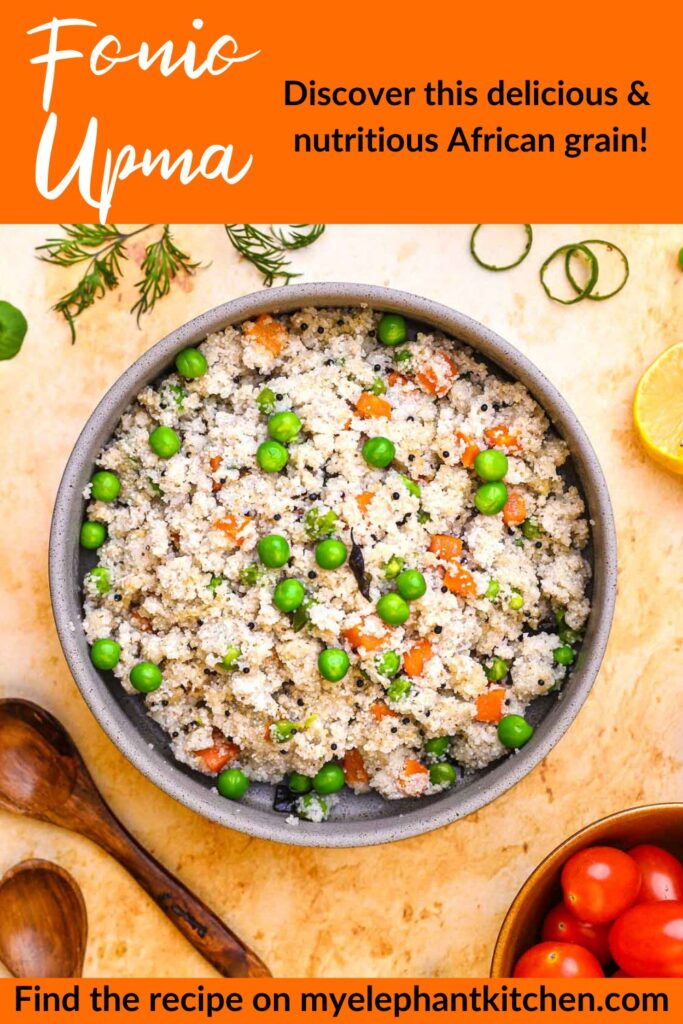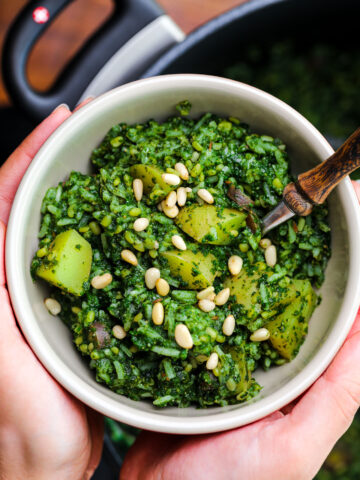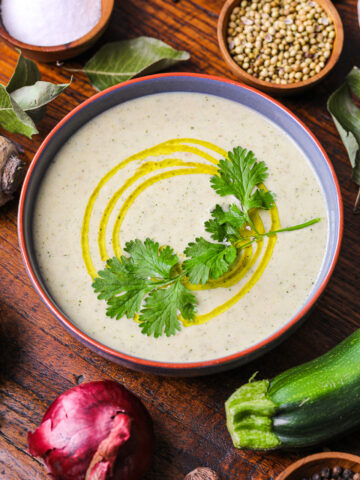Recently, I discovered a type of grain I had never heard of before – fonio. Fonio is gluten-free, highly nutritious, and full of dietary fiber. It is most often compared to quinoa, couscous, and millet, which is partly accurate. Why so? Because fonio is a species of millet! Fonio is most often used to make porridges and couscous types of dishes, which really inspired me! This opened the door for many different vegan fonio recipes. One of my favorite savory porridge recipes is the Indian porridge upma. Upma is usually made using semolina, but since fonio grains are really small, they act as a great replacement. This is how I came up with this great vegan Fonio Upma recipe!
You may be interested in – Vegan Chili Sin Carne Recipe
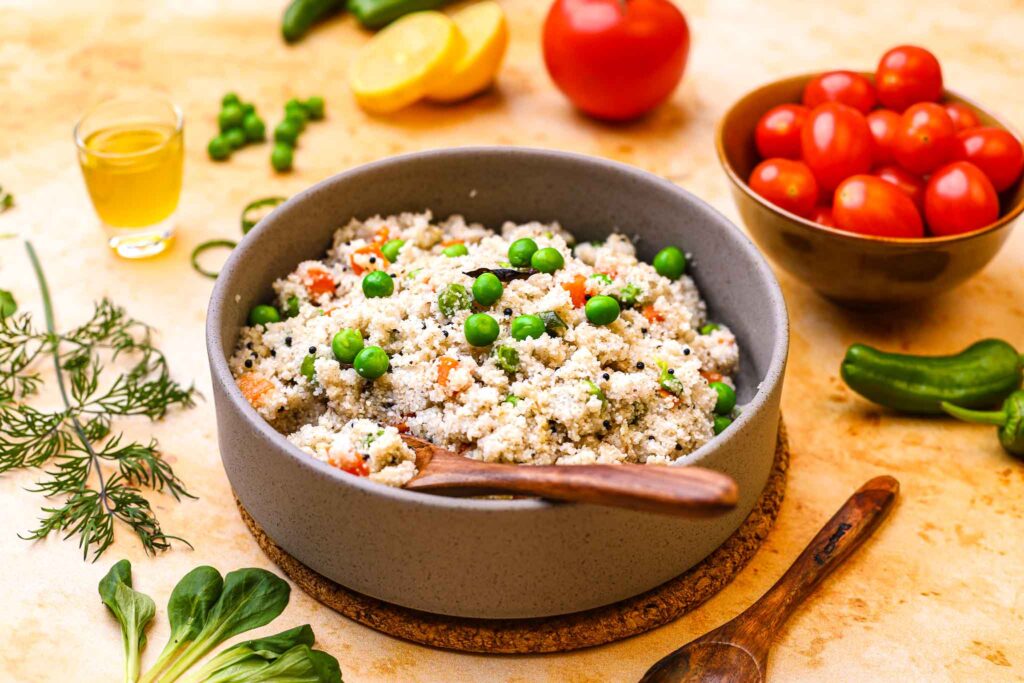
What is fonio?
Let’s talk some more about what fonio is. As I mentioned earlier, it is a grain from the millet family. Fonio is actually a very ancient grain, which has been grown for many centuries in Africa. It is therefore mostly consumed in Africa, where it is considered a staple food. Fonio can also be grounded into flour. It, therefore, makes for a very interesting gluten-free flour option!
Fonio may be white or black in color. For this recipe, I am using white fonio, in particular, the Blanchi variety, which I got from gebana. Read up about the process of growing and selling fonio in the next paragraph!
Do check out the article on the Best Vegan Restaurants In Zurich
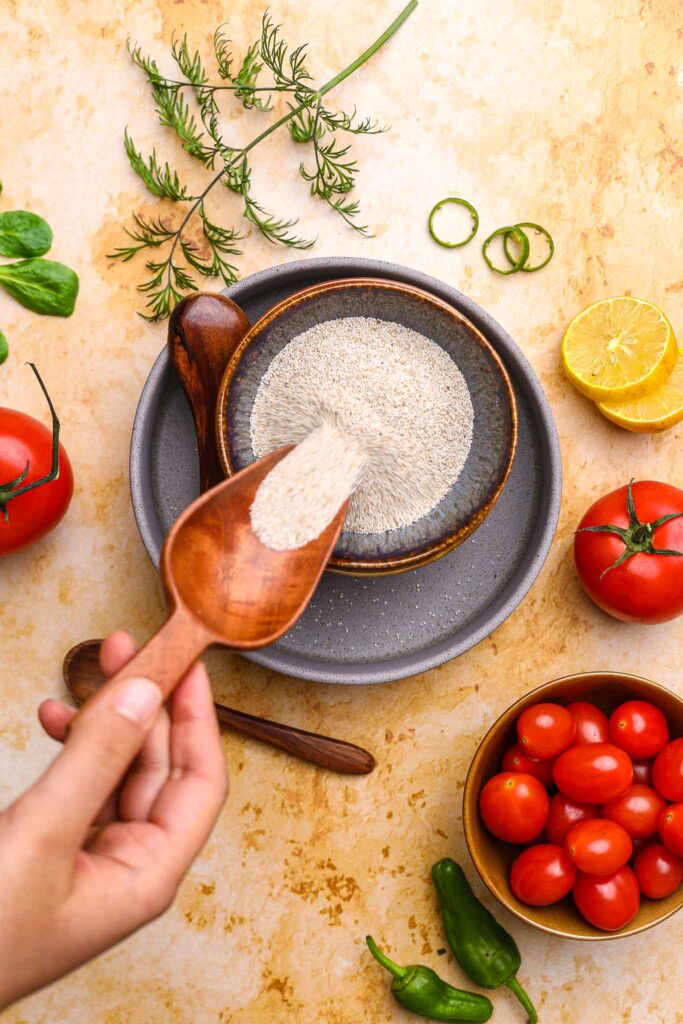
Where does fonio come from?
Fonio is an African grain, which grows in West Africa. More precisely, it grows on the southern edge of the Sahara desert. gebana gets its fonio from the Doufelgou region in Togo. After its harvest, the company Bodhi Foods processes the fonio. As such, gebana’s fonio is a product which is fully grown and processed in Togo, therefore supporting the local economy. By working with local Togolese companies, gebana is helping to promote trade between the EU and African producers.
Fonio is a plant that grows very quickly – it only needs about 70 days between sowing to harvesting. Moreover, it is resistant to natural hazards such as drought. It can also grow on poor or very dry soils. As you can imagine, this plant is a very important part of the local population’s nutrition. As it grows plentiful, it is realistic for Togolese farmers to grow it for local, as well as international consumption. By consuming fonio from gebana, you are therefore supporting a Fairtrade agricultural practice!
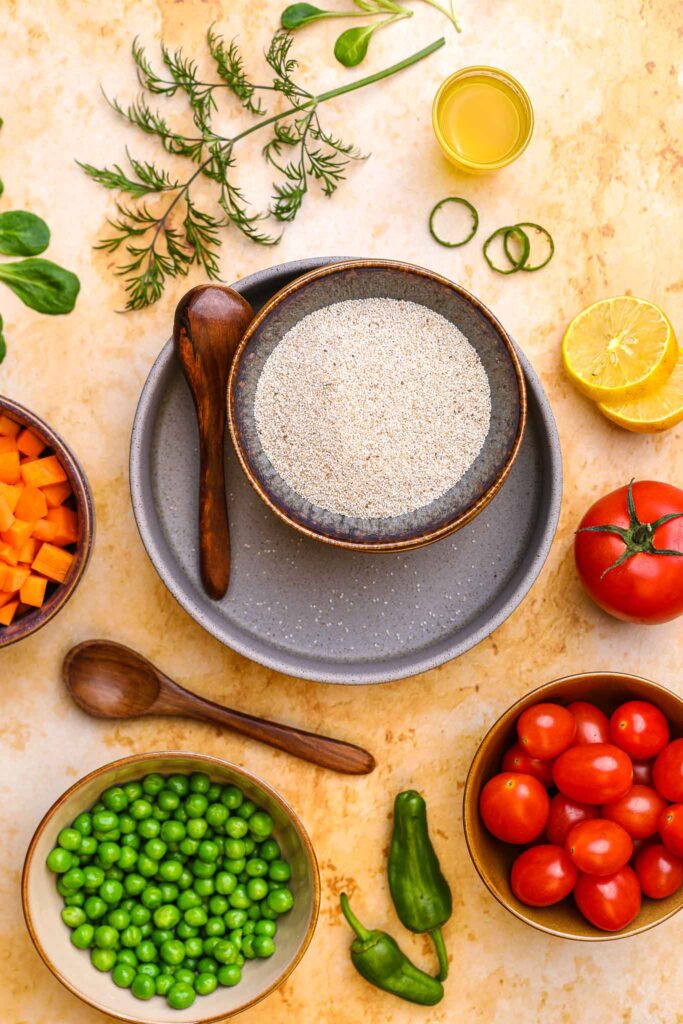
Fonio’s health benefits
Fonio is rich in health benefits, thanks to its many nutritional attributes. As a matter of fact, fonio is considered one of the most nutritious grains in the world! It contains many necessary nutrients, such as B vitamins, as well as many minerals. These minerals include iron, copper, zinc, calcium, and magnesium. It is also very rich in protein. To top this off, it also contains two very necessary amino acids: methionine and cysteine.
As I mentioned earlier, fonio is also a gluten-free grain. It can therefore be consumed by a large majority of people, including gluten-intolerant consumers and coeliac disease patients! Because it can be consumed and adapted to many people, fonio is a really interesting product. Fonio flour is a very strong and workable flour. This opens even more doors for the use of this incredible plant.
With these many health benefits, it is not surprising that fonio is a staple food of the West African people. In some parts of Western Africa, fonio also still plays an important role in local celebrations and occasions.
Personally, I love learning about such foods. Just because I wasn’t aware of fonio up until recently doesn’t mean it’s totally unknown. For another population, it is something that is very important and uprooted in their everyday life. It truly makes you think about how big the world is and how much there still is to learn! Developing these vegan fonio recipes was really fun, since I got to learn about fonio’s use in West African cuisine, while adding my own spin to the ingredient!

What does fonio taste like?
I’ve talked about what fonio is and where it comes from, but what does it actually taste like? Is it any good? Well, of course it is! Fonio has a slightly nutty taste, which is rich, but not overbearing. Its texture is similar to couscous, but the flavor is definitely more pronounced. Nevertheless, fonio’s taste remains subtle and far from intense. Texture-wise, fonio is less mushy than you probably imagine it. Compared to cooked oats or rice, it has more of a bite to it.
The great thing about fonio is that it can be very versatile, since its flavor can act like a blank canvas for any dish. As such, fonio compliments very well any types of sauces and dishes, be it sweet or savoury. Here I am presenting you a savoury fonio recipe: the upma. But do you have more of a sweet tooth? Worry not, as I have also developed a sweet fonio recipe! My sweet fonio porridge recipe will be out next Sunday!
About this recipe
Fonio is super versatile and is adaptable to many recipes. For today though, we will focus on my first of two vegan fonio recipes. If you are familiar with Indian cuisine, you will recognize many flavors in this dish, as I used a lot of spices popular in Indian dishes. Here’s a step-by-step on how to recreate this fonio upma recipe!
I have divided this recipe into two principal steps: cooking the fonio and preparing the rest of the upma. Let’s begin with cooking the fonio!
Cooking fonio is really simple, the process is almost the same as with any other grain. To start off, grab your water and salt. Dissolve the salt in the water and bring the water to a boil. When your water is boiling, add the fonio and cook on high heat for about 5 minutes, without a lid.
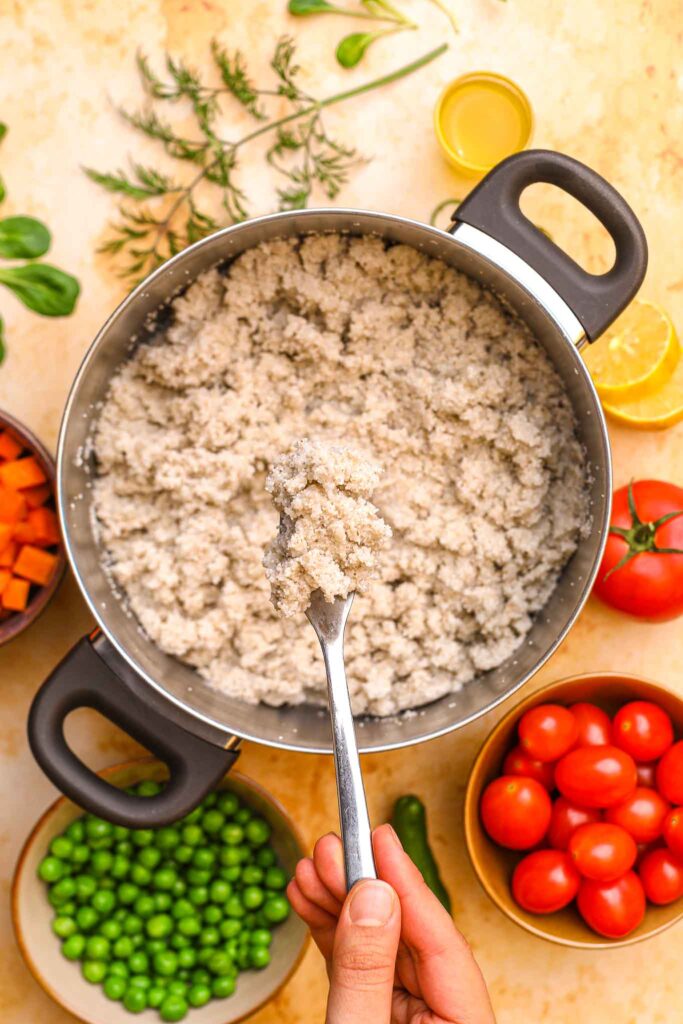
After these first 5 minutes, reduce the heat to low and add a lid to your pot. Let the fonio gently simmer for 8 to 10 minutes. Remove the pot from the heat, uncover it, and, using a fork, fluff up your fonio. Congratulations, you have completed the first step of the recipe! We can now move on to making the rest of the upma.
To make the upma, start off by adding oil to a heavy bottom pan and heating it up. Once your oil is hot, add the mustard seeds and cover your pan, letting the mustard seeds get fragrant in the oil for about 30 seconds. Further, add the curry leaves, green chili, and carrots and cook for about 2 minutes on medium heat. Add your peas, turn the heat down to low and cook them down for 5 minutes, covering the pot with a lid.

When the 5 minutes are over, add and mix in the rest of your spices: paprika, coriander, nutmeg, and black pepper. Then, add your fonio to the mixture and gently incorporate everything together. Cover the pot for one last time, turn the heat off, and let all the ingredients sit together for a few minutes.

That’s it, you’ve made a vegan fonio upma recipe! As you see, cooking vegan fonio recipes really isn’t hard. Let us know what you thought of it by leaving a comment, I’m really curious to hear everyone’s thoughts on fonio. In the meantime, I have also developed a sweet fonio porridge recipe, equally as delicious as this one!
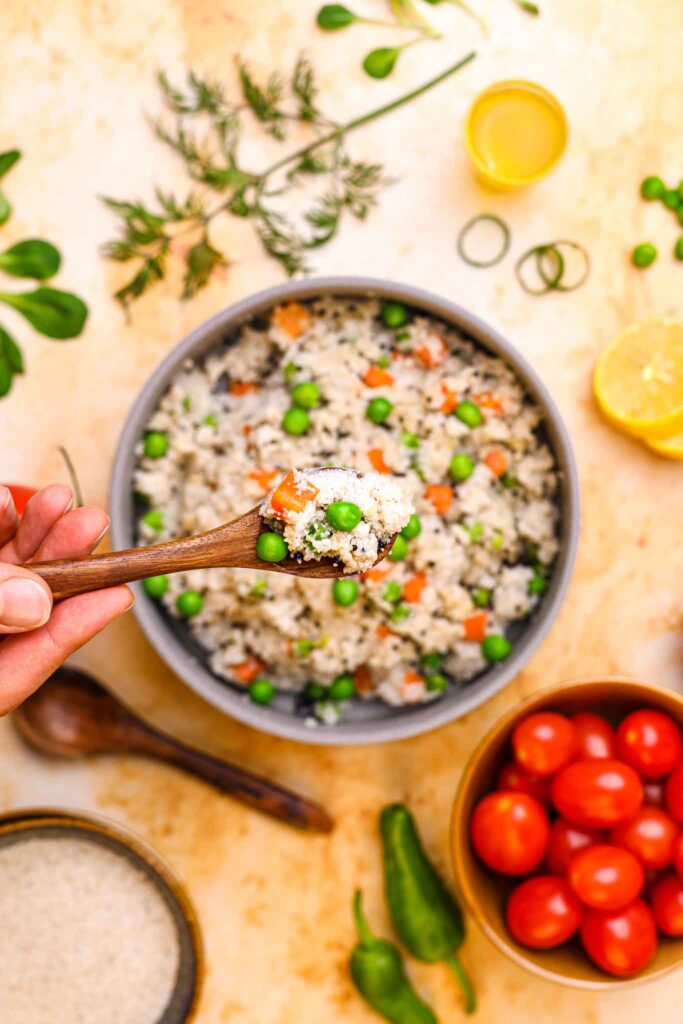
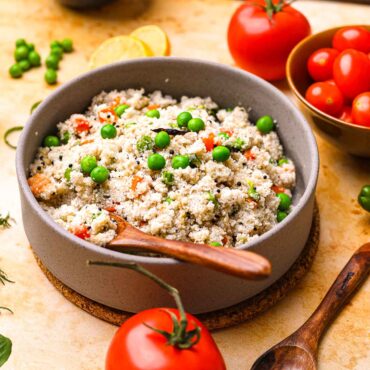
Fonio upma recipe
Ingredients
- ½ cup Fonio Millet
- 1 tbsp Sea salt
- 2½ cups Water
- 3 tbsp Olive oil
- 1 tbsp Mustard seeds
- 2 tbsp Curry leaves
- ½ tsp Green chilli Freshly diced (optional)
- ¾ cup Carrots diced
- ¾ cup Green peas fresh or thawed
- 1 tbsp Coriander powder
- 1/2 tbsp Paprika powder
- 1/2 tsp Nutmeg powder
- 1/2 tbsp Black pepper
Instructions
Cooking the fonio
- In a pot, dissolve the salt into water and bring to a boil. Mix the fonio in and cook for 5 minutes on high heat.1/2 cup Fonio Millet, 1 tbsp Sea salt, 2½ cups Water
- Reduce the heat, cover the pot with a lid and let the fonio simmer on low heat for about 8-10 minutes.
- Remove the pot from the heat, uncover and fluff the fonio using a fork to allow some air between the granules.
Preparing the upma
- Add oil to a heavy bottom pan and heat it up. Throw in the mustard seeds, cover the pan and let the seeds crackle for about 30 seconds.3 tbsp Olive oil, 1 tbsp Mustard seeds
- Sautee the curry leaves, green chilli and carrots for 2 minutes on medium heat. Mix in the peas, cover the pan with a lid and cook for 5 minutes on low heat.2 tbsp Curry leaves, ½ tsp Green chilli, ¾ cup Carrots, ¾ cup Green peas
- Mix in the coriander, paprika, nutmeg and black pepper. Transfer the fonio to the pan and mix gently until combined well. Turn off the heat and cover the pan and let it sit for a few minutes before serving.1 tbsp Coriander powder, 1/2 tbsp Paprika powder, 1/2 tsp Nutmeg powder, 1/2 tbsp Black pepper
Nutrition
